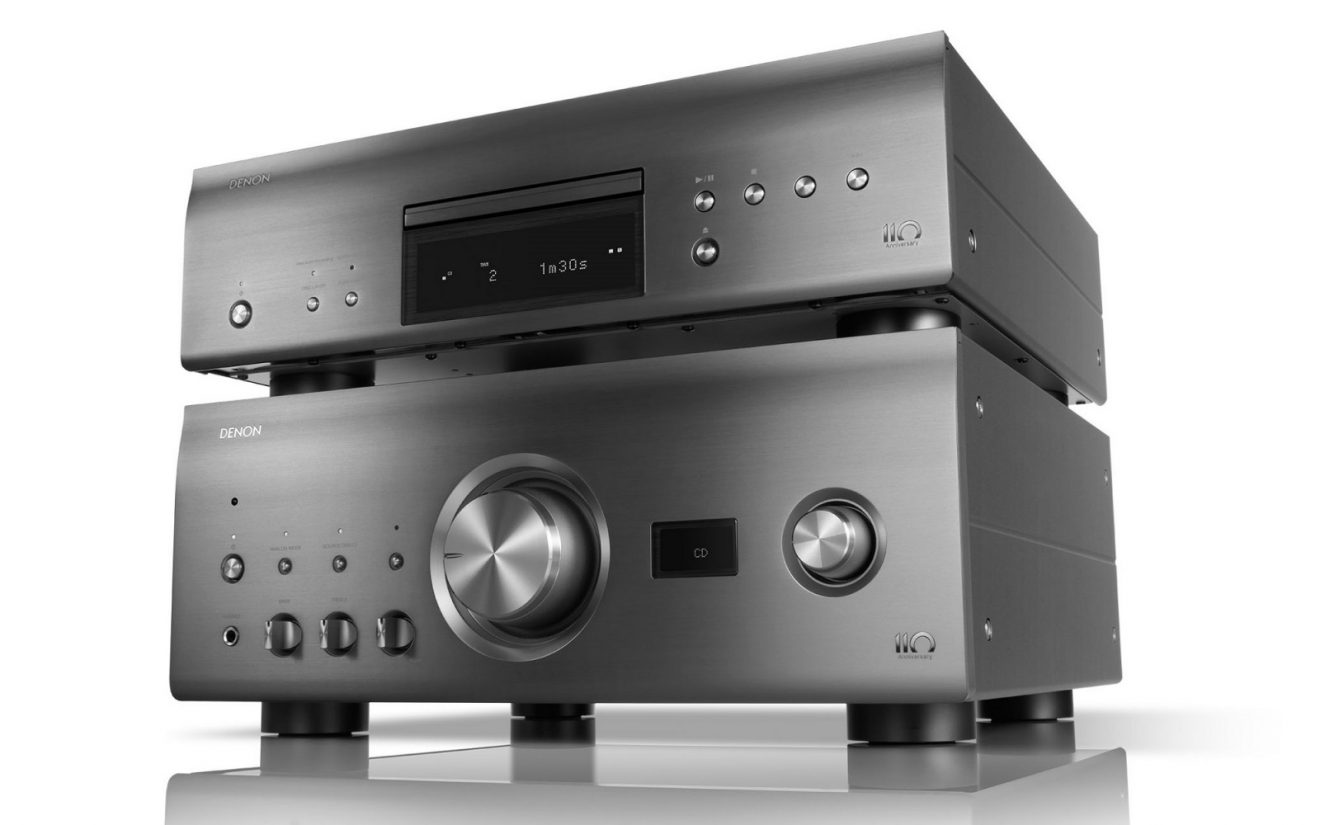Review: DENON PMA-A110 AND DCD-A110 – In September, Sound United announced the release of Denon’s anniversary products . Denon has existed for 110 years and that should of course be celebrated with something special. From October, therefore, an integrated amplifier, a SACD player, an AV receiver and an MC element will be on the market, all of which are only available to a limited extent. You do get a 5-year warranty on it and you also get a certificate. For this review, I thoroughly tested the Denon PMA-A110 integrated stereo amplifier and DCD-A110 SACD player.
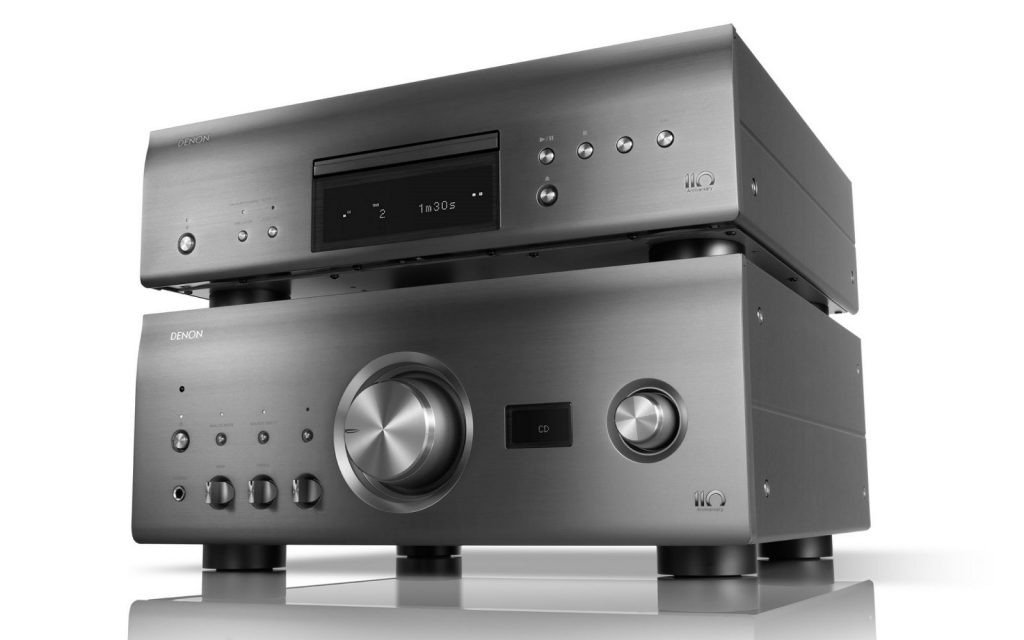
It’s Denon’s birthday
Under the wings of Sound United, Denon is currently celebrating the 110th anniversary of the brand. That seems to us indeed worth a celebration. 110 years ago, you would say that electricity was hardly widely available. In any case, it is worthwhile to briefly explain what the history of the brand is about by naming a number of milestones. So, once upon a time…
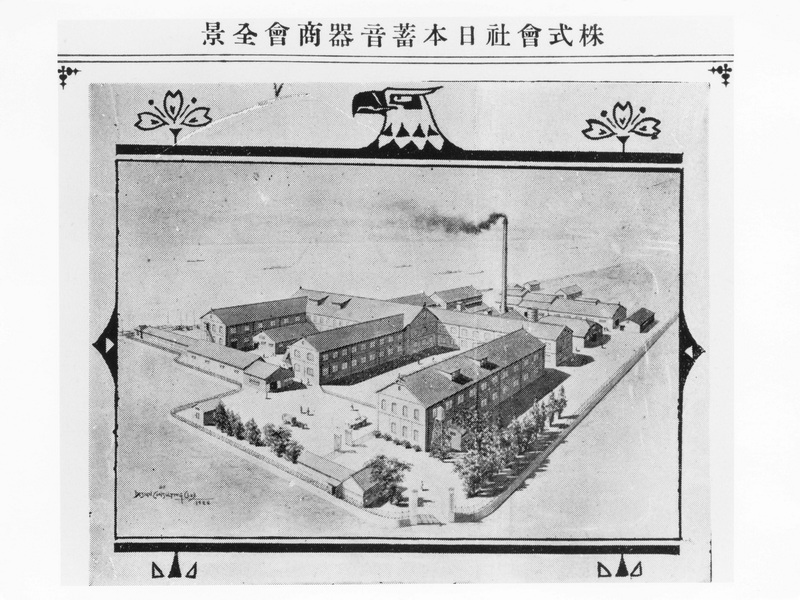
1910 – Nippon Chikuinki Shoukai
Under the above name – or loosely translated into English: Japan Recorders Corporation – the first audio equipment aimed at home use is marketed: a phonograph. You know, such a record player with a huge horn on it for the audio reproduction. Japan’s first record company was also founded under the name Nippon Chikuinki Shoukai. Because what good is such a device if you cannot play music on it because the music is missing?
1939 – Nihon Denki-onkyo Company
In the year that World War II broke out, Denon, then still operating under the name Nihon Denki-onkyo Co., released the first professional recording machine to actually record vinyl . The device was supplied to the NHK, the Japanese national broadcaster, in view of the 1940 Olympic Games in Tokyo. In the same year, the name Nihon Denki-onkyo Co. shortened. They didn’t have to search long for inspiration, because Denon is actually nothing more than a combination of a number of words. The Japanese DENki means electric and ONkyo means sound. Denki-onkyo became Denon. Incidentally, that other manufacturer (Onkyo) has nothing to do with Denon except that part of the name.
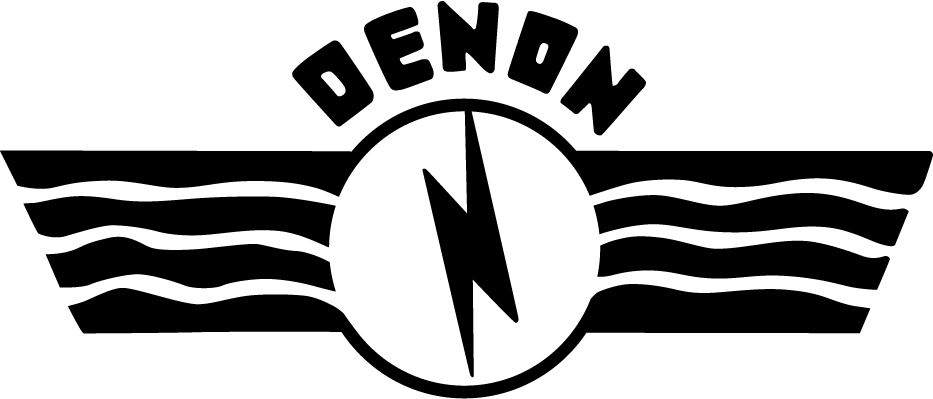
You pronounce the brand name as Den-On and therefore not Deenon or Dennon as you often hear. The prefix Nihon (Japan) was dropped completely. The final brand name Denon has therefore been around for over 80 years.
1945 – Emperor Hirohito speaks
In August 1945, a speech by Emperor Hirohito was recorded on the DP-17K vinyl disc recorder. This speech marked the end of World War II and it is still a great honor for Denon that the then Emperor of the Land of the Rising Sun trusted Denon that they would take care of the recording. The original recording and the Denon DP-17K can be admired in the NHK Museum of Broadcasting in Tokyo, Japan.
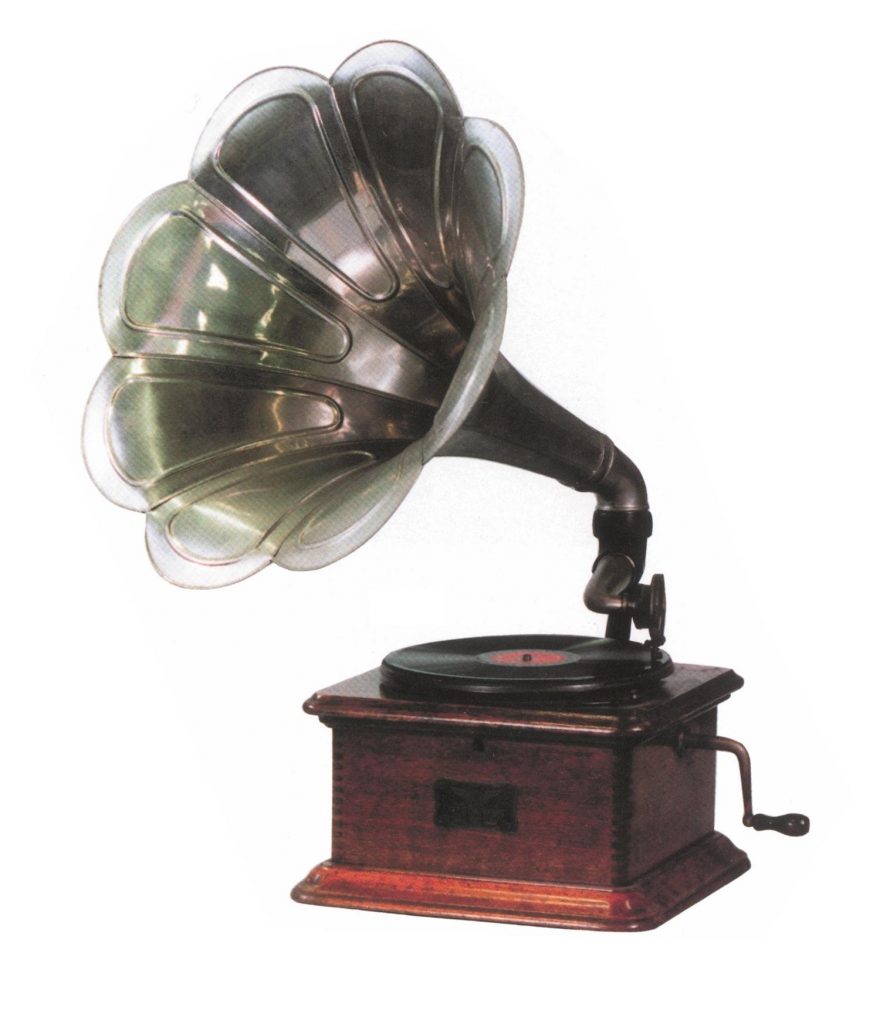
1971/72 – Direct Drive Record Player and PCM Digital Recorder
In 1970, the now legendary DL-103 MC cartridge entered the consumer market (photo right). A high-quality element so that people at home received the best possible quality on their stereo system. Incidentally, that element was developed together with NHK. The best part is that the DL-103 MC cartridge is produced and sold to this day.
In 1971 Denon introduced the DP-5000 Direct Drive turntable to the professional market. This record player was mainly intended for radio stations. The techniques in this record player have trickled down to the consumer market a year later.
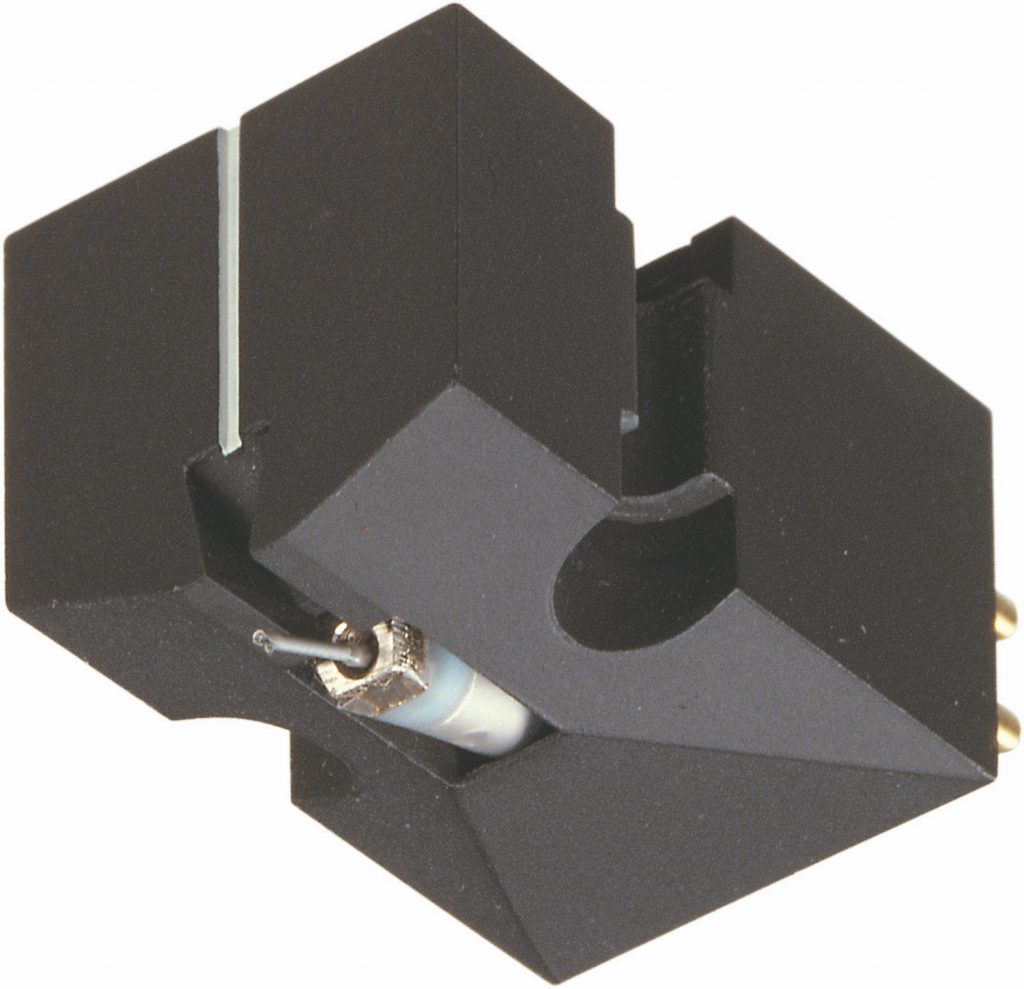
A year later, in 1972, the Japanese introduced the world’s first practically usable PCM Digital Recorder to the professional market, which was used in recording studios. The recorder could record up to 8 channels completely digitally. This marked the starting point of the digital revolution in the audio world. In the same year, the DP-5500 Direct Drive record player was also introduced to the consumer market. A derivative of the aforementioned DP-5000. Or rather, it was actually the DP-5000, but placed in a luxurious plinth with a dust cover. Incidentally, it was a design without an arm, which had to be placed separately.
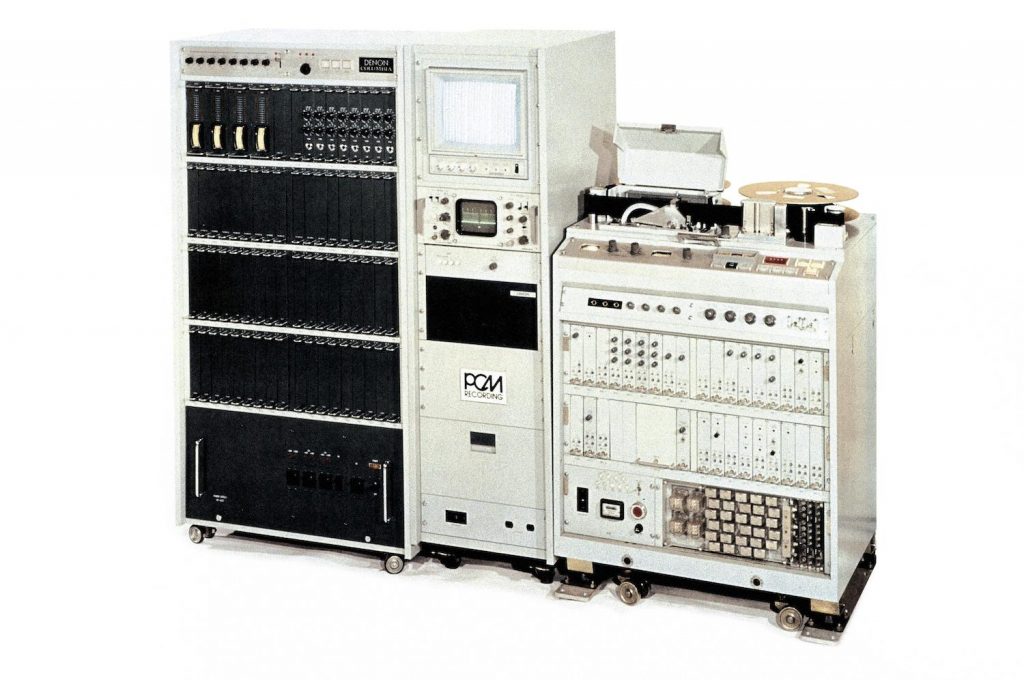
And finally that same year the PMA-500 integrated amplifier saw the light of day. That PMA-500 already had that fairly characteristic centrally placed volume knob, just a bit larger than the other buttons. This design has been continued to this day in Denon’s hi-fi amplifiers.
1981/82 The world’s first CD player
In the 1980s, various manufacturers came up with the CD player. Denon had the honor of introducing the world’s first player to the professional market in 1981. It was a huge piece of equipment that wouldn’t look out of place in a hospital operating room or laboratory, for example. A special appearance.
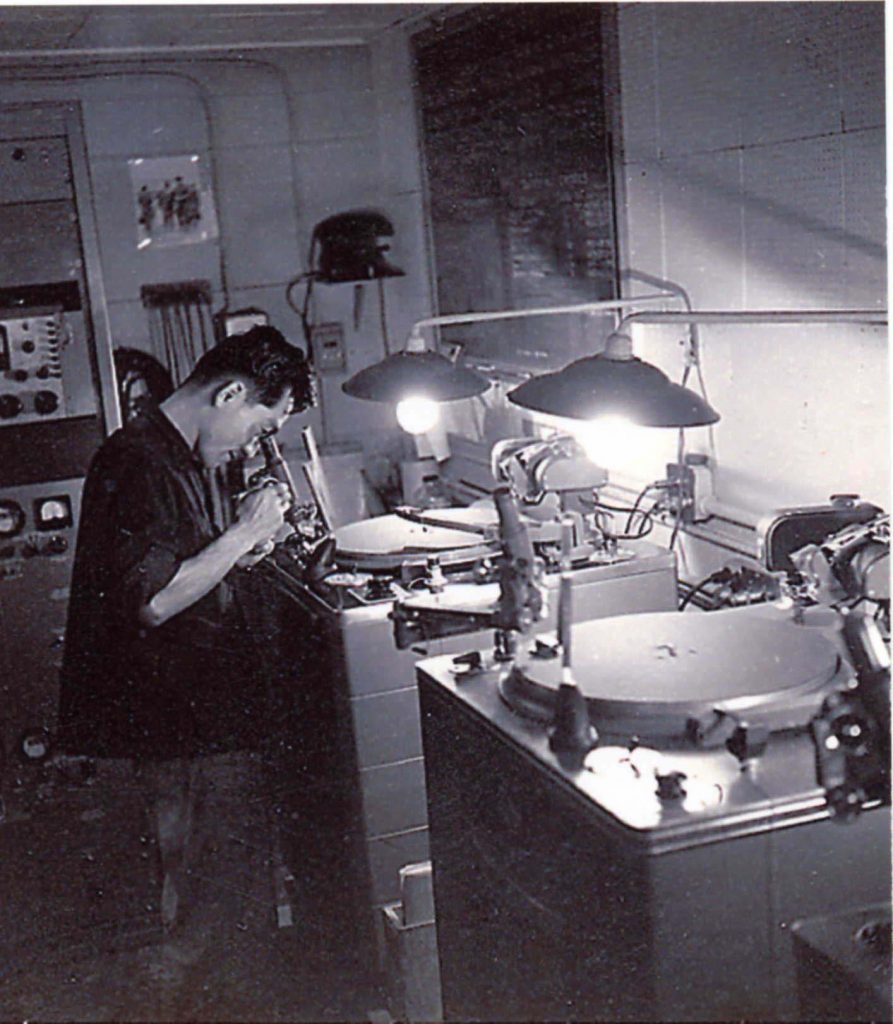
The first CD players for the consumer market followed in 1982. At Denon they are still convinced that they really were the very first, but other manufacturers sometimes claim that too. I was 2 years old at the time, so I don’t know. The fact is that in a short time Denon, Hitachi and Sony came on the market with CD players. And the CD is still a very popular medium, which has been around in the audio world for almost 40 years.
Mid 1980s to late 1990s
From the mid-80s Denon also started to move in the field of the combination of audio and video. In 1985 the brand released the AVC-500, an AV amplifier that could also switch images via various inputs. In 1988 the AVC-2000 followed, the first surround amplifier with Dolby Pro Logic, the forerunner of all surround formats, on board.
In 1993, the now legendary S1 Series with Alpha Processing was launched. This series included the DP-S1 CD player and DA-S1 DAC. And what about the monstrous POA-S1 monoblock amplifier (photo below). All gems from the long history of the Japanese brand. And Alpha Processing, a signal interpolation technique, still exists in Denon devices.
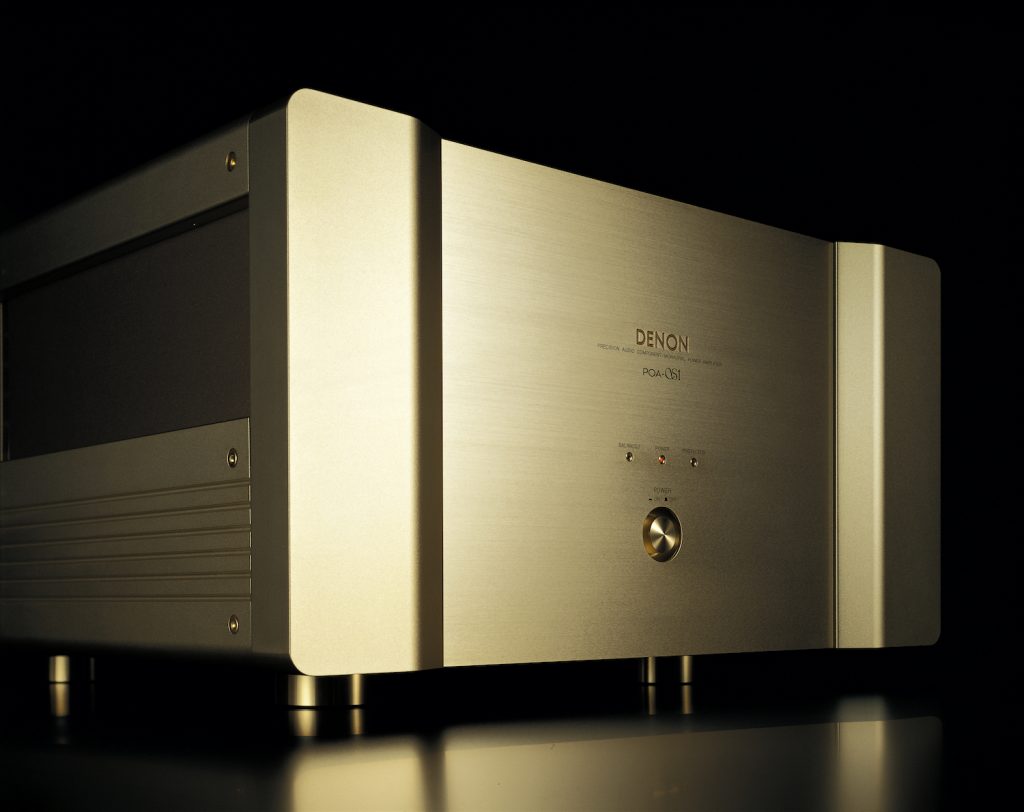
In 1995 the world’s first Dolby Digital AV preamplifier followed with the coveted THX certificate. It was therefore that the Japanese for the Denon AVP-A1 collaborated with Lucasfilm, the studio behind Star Wars. In 1999 they went even further by launching the AVC-A1SE, which already supported THX Surround EX technology for the first time. DTS-ES Discrete 6.1 was also supported.
In 2008, another technical tour de force followed in that area. Namely a high-end preamplifier and 10-channel power amplifier. The AVP-A1HD and POA-A1HD. Never before had so many amplified channels been housed in one device. And in 2009 they were again the first at Denon. Now with the first universal disc player. The DVD-A1UD played sacd, DVD and CD in addition to Blu-rays. In short, looking back at the history of the brand, you can say that they were pioneers over the past century.
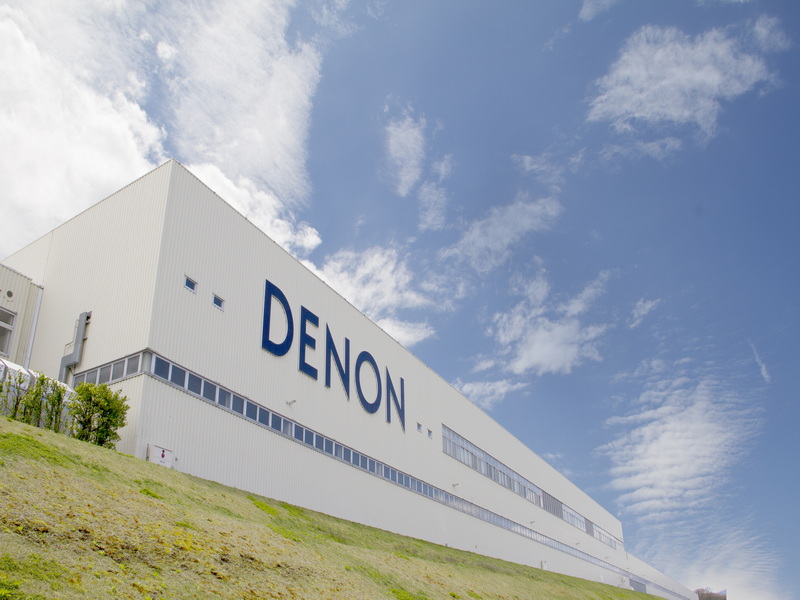
2020: Denon A110 Series
In the year in which Denon turned 110, four special devices will be added. These are: a high-end AV receiver, the 8K-ready AVR-A110; a DL-103 based MC cartridge, the DL-A110; and the PMA-A110 integrated stereo amplifier and DCD-A110 SACD player discussed in this review. It all looks a bit more modern than, for example, the PMA-500 from the 1970s, but the PMA-A110 does have that characteristic centrally placed large volume knob.
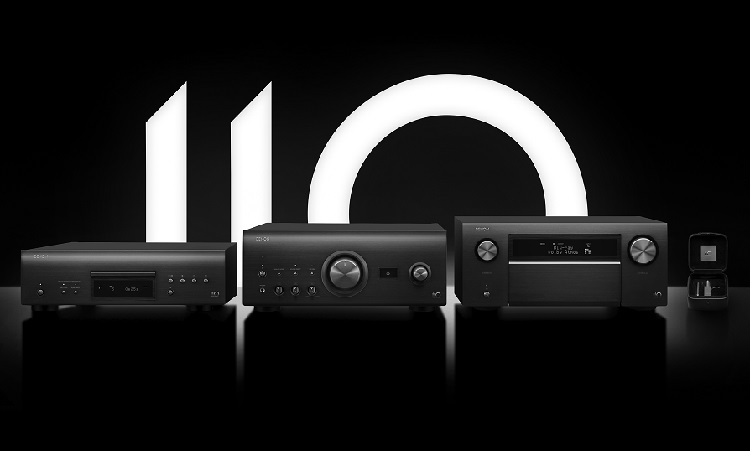
PMA-A110 integrated amplifier
The Denon PMA-A110 is an integrated two-channel amplifier, which features the seventh generation Ultra High Current topology (UHC). The PMA-A110 delivers 80 Watts per channel at 8 Ohms, measured over 20 Hz to 20 kHz. This involves 0.07 percent THD. At 4 ohms, the PMA-A110 delivers a whopping 160 watts of peak power, measured at 1 kHz, 0.7 percent THD. According to the Japanese, the Denon PMA-A110 plays completely linearly under all circumstances and has no trouble with difficult speakers. The frequency range extends up to 100 kHz.
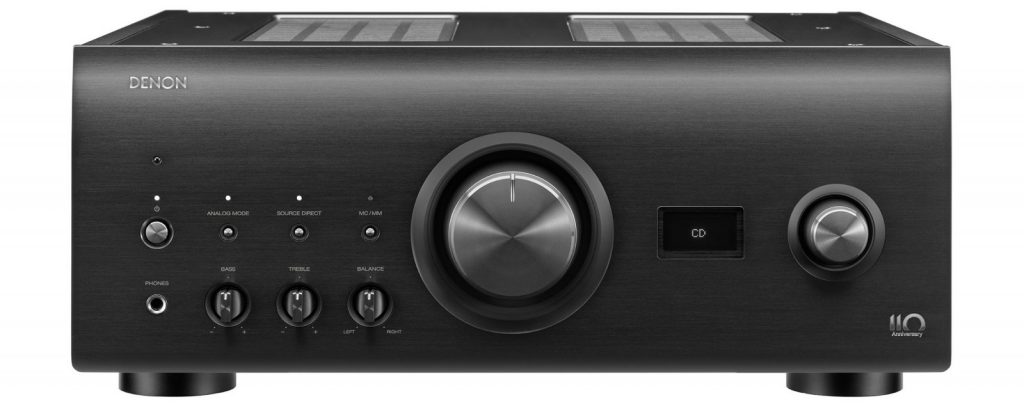
Quad DAC Configuration
On board the PMA-A110 you can find a nice DAC. It is a Quad DA converter. Both the left and right channel are equipped with two differentially working Burr Brown PCM1795 DAC chips. In addition, the PMA-A110 is equipped with Denon’s own Ultra AL32 Processing. This technique interpolates the signal with smart algorithms in order, in its own words, to get closer to the original analog signal. With up to 32x oversampling of the input signal, the output signal is 1.411 MHz (44.1 kHz input signal) or 1.536 MHz (48 kHz input signal).
To keep everything in sync with each other as well as possible, the DAC master clock has been placed right next to the DAC chips. The PMA-A110 is equipped with two clock oscillators. One for the sampling frequency of 44.1 kHz and one for 48 kHz. This keeps jitter to a minimum.
PCM signal may be supplied via the USB-B input up to a resolution of 384 kHz / 32-bit, DSD up to 11.2 MHz (DSD256). Via the three optical inputs and the single coaxial digital input, a maximum input of 192 kHz / 24-bit is supplied.
DENON PMA-A110 AND DCD-A110: Also for analog lovers
The PMA-A110 also has a phono input which is suitable for both MM cartridges and MC cartridges and for those who prefer to use the PMA-A110 as a fully analog machine, can choose to switch off the digital signal paths and even the display. for the purest analog reproduction possible. At that point, the entire digital portion of the amplifier is turned off.
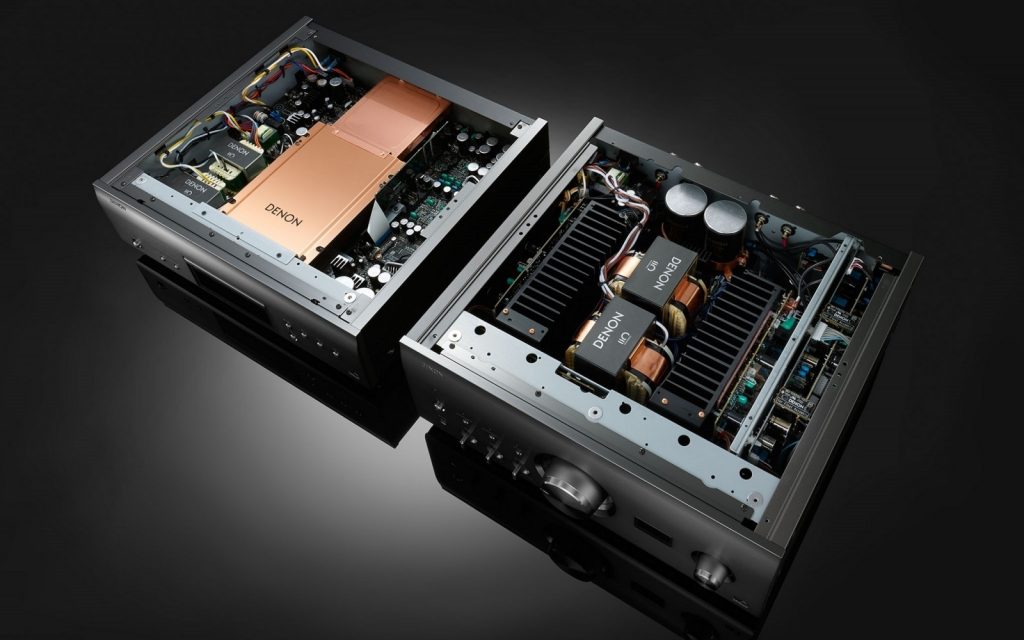
Incidentally, the PMA-A110 has separated everything internally from each other anyway, in order to eliminate as much noise and other interference on components as possible. The entire structure of the amplifier consists of six different compartments to prevent vibrations and influences on each other and the two transformers are placed next to each other in a mirrored arrangement so that any influences on each other, such as magnetic flux, disappear.
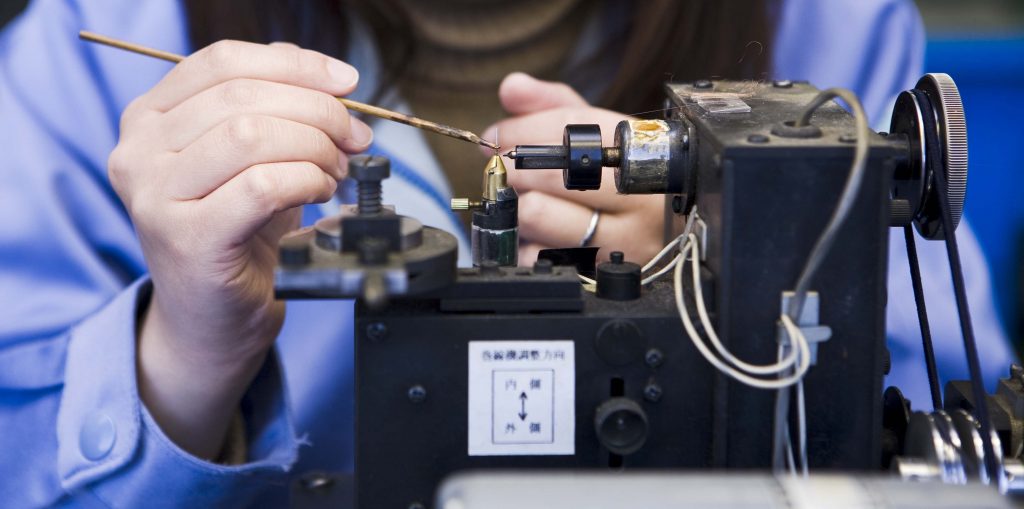
DENON PMA-A110 AND DCD-A110: Can be used as an analogue power amplifier
For those who have a home cinema solution in the living room and only want to use 1 pair of speakers for listening to movie audio and music, a special input is provided so that the PMA-A110 effectively functions as an (analog) power amplifier. This is an analog RCA input with a fixed output power. In that case, the volume button no longer works either. In this way you can use a home cinema receiver as a pre-amplifier.
Of course you can also use other preamps on this input. The advantage here is that you can switch off the entire digital circuit so that you can really speak of a fully analog power amplifier.
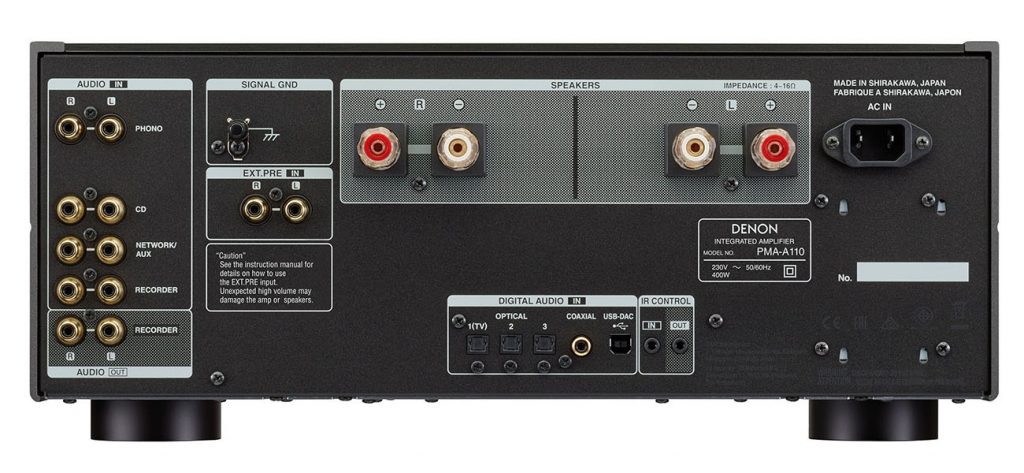
For those looking for an amplifier that has two pairs of speaker terminals, for example for bi-wiring, or for two zones, the PMA-A110 will unfortunately be disappointed. It is ‘only’ equipped with a single pair of terminals. These are also very heavy and solidly constructed. Just like all other terminals, by the way. Nevertheless, their most recent non-anniversary top model, the PMA-2500NE , does feature a double pair of speaker terminals . I personally would have liked to see that on this anniversary model.
Excellent finish
The overall finish is excellent. At 25 kilos, the device is certainly not a lightweight and the switches at the front, the volume knob, the terminals, the feet, everything exudes quality. And especially for the A110 series, a new color has also been introduced that you will not find on other Denon devices. This Silver Graphite color is very tasteful and fits in any interior in my opinion and is so much more beautiful in real life than it appears in the photos. And of course, the appearance is entirely dependent on taste, but what a beautiful machine to see. Conventional, though. And except for the color, it is the same as the Denon PMA-2500NE in terms of looks.

Marantz, also operating under the wing of Sound United, takes a much more thorough and completely different approach with their new 30 Series . They are now moving away from the characteristic design that has been used for years. Denon still opts for the Denon characteristic appearance. Whether that is bad, I leave in the middle. I think the PMA-A110 is simply very successful.
DCD-A110 SACD player
Looking at the DCD-A110 SACD player, you can also see similarities here with somewhat older Denon models. Apart from the color, the DCD-A110 looks like two drops of water on the DCD-2500NE. As with the amplifier, the beautiful Silver Graphite color with special 110 logo is milled in the front.
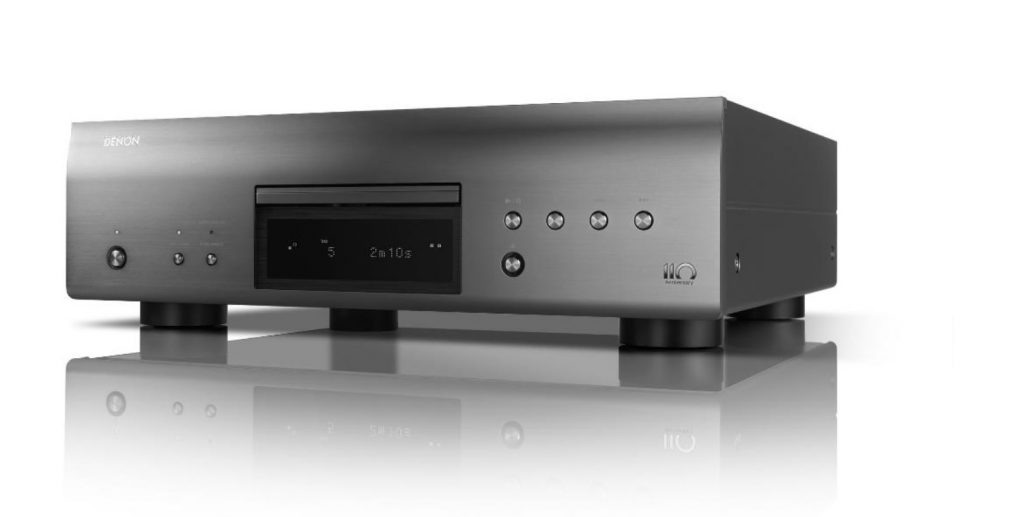
The same Quad DAC
In terms of content, the player is in many ways similar to the amplifier. For example, the same DAC configuration has been used here, and the analog and digital circuits are separated from each other within the beautiful housing. The only difference here is that you cannot play the highest resolutions via this player, because with the amplifiers this is only possible via the USB-B connection, which is missing on the player. Would it be overkill to put such a high-quality DAC in both the amplifier and the player, you might think? I personally don’t hear any difference either. Whether I attach the player analog or digital to the amplifier. Anyway, you don’t have to buy the devices as a set. In any case, it is possible to connect the player to an amplifier with analog RCA connections.
DENON PMA-A110 AND DCD-A110: Everything to prevent vibrations
Like the other more high-end models from Denon, the A110 version features the SVH mechanism with regard to disk drive design. SVH stands for Suppress Vibration Hybrid. What it means is that the signal paths are all kept as short as possible.
In addition, all parts of the mechanism are made from a variety of materials. For example, a copper plate has been mounted at the top and the disc tray itself is made of aluminum and the support structure consists of a plate of 2 mm thick steel. This, together with other vibration-reducing applications, such as cast iron feet and a low center of gravity, ensures a very stable operation of the disk drive. This results in reading your beloved silver-colored discs as accurately as possible.
All that steel, because the entire housing is also made of steel, ensures the relatively high weight of 16.2 kilos. That is not wrong for a CD player. There are plenty of amps that don’t even weigh that much. The fact is that this contributes to the high stability and associated high accuracy of the DCD-A110.
Nice remote control
The aluminum remote control that comes with both devices is very nice and relatively heavy and fits nicely in the hand. It is a fairly narrow model with a nice layout and the buttons give good feedback. They are hard chrome buttons and the remote looks chic. The only downside is that there is no backlight or the like. So in a darkened listening room it is sometimes a matter of searching for the right button. An identical remote control is supplied with the PMA-A110 and DCD-A110. So you can operate both devices with the same remote control. Very nice. You can immediately store one as a spare.

DENON PMA-A110 AND DCD-A110: Test and compare
I was able to listen to the Denon amplifier and CD player combination on three different speakers. On a pair of DALI Oberon 7 floorstanders, the Bowers & Wilkins 606 AE . I have also been able to directly compare the Denon PMA-A110 with the Rotel RA-1592integrated amplifier. It is priced slightly lower, but has more power. I have listened to the Denon devices combined, have listened to CDs from my OPPO UDP-203 which I have banned both analog and digital via coax. I also frequently used the PMA-A110 as a power amplifier for my front channels in my Dolby Atmos setup, where my Anthem MRX 720 was used as a preamplifier / processor. Finally, I connected a Chromecast Audio via an optical digital input and my old Sony PS-3300 record player ran for a while. In short, tried a lot and listened a lot.
PMA-A110 – sound quality as analog power amplifier
The way I listened to the performance of the PMA-A110 the most is when I used it as a power amplifier in my living room. It is striking that there is more peace in the reproduction in direct comparison with the amplifier in the Anthem AV receiver and also in comparison with the Rotel. Because all digital circuits in the Denon were switched off and I could use Anthem Room Correction in this way, the reproduction was neatly tuned to the listening room.
The stereo image was wider than with the Anthem and the Denon, in particular, had more control over the Bowers & Wilkins speakers. Compared to the Rotel RA-1592, it is a somewhat smoother, rounder reproduction with still a lot of detail in the midrange and high tones, but with more calm and suppleness. The match with the Bowers & Wilkins Signatures was a very happy one. The Rotel is a bit fresher, tuned a bit brighter compared to the Denon.
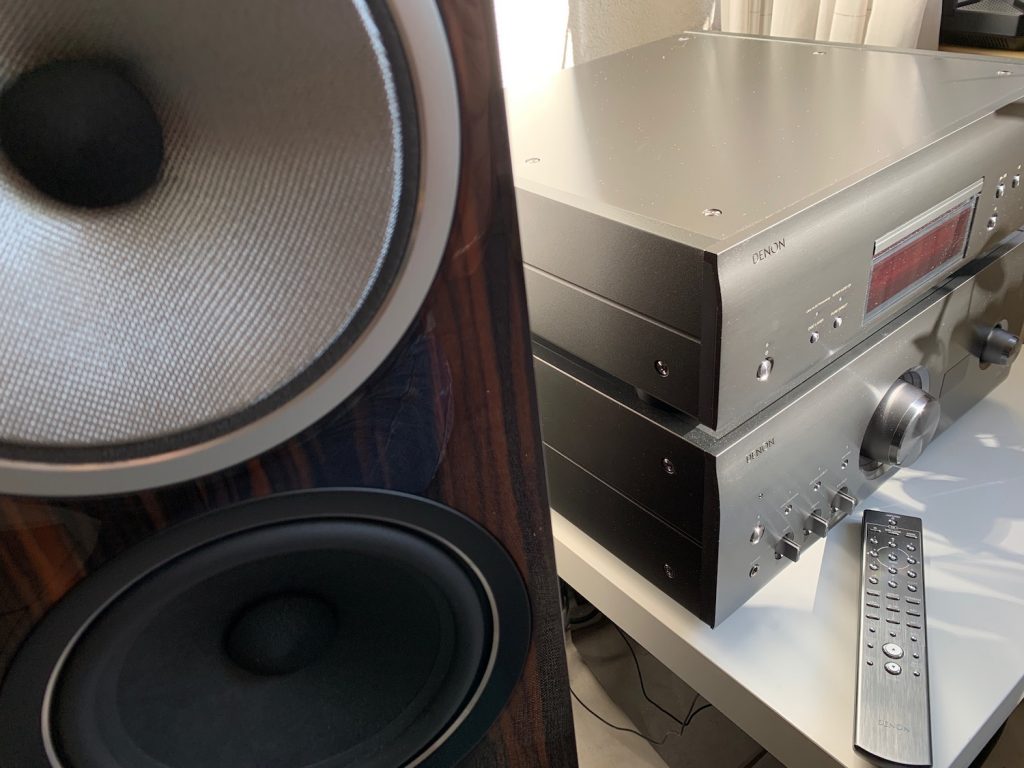
With the DALI Oberon 7, there was a little less difference between the three separate amplifiers. Those speakers are also less rebellious in terms of behavior and do not dip enormously at higher volumes. Something the B & W’s do. The Oberon’s have been in my home for quite some time, thanks to DALI Benelux, and in my experience they go well with many different amplifiers. They are very easy going in that regard. The mids and highs are also a bit more forgiving that is the case with the B & Ws. Less analytical, so to speak.
DENON PMA-A110 AND DCD-A110: High quality phonostage
.jpg)
I only have access to a record player with MM cartridge. The PMA-A110 can also handle an MC cartridge and the DL-A110 released by Denon seems like a great match. Perhaps someone else at HIFI.NL will question that element again. The fact is that the reproduction of my vinyl is taken to a higher level with the PMA-A110. The reproduction is more open with a wider stereo image than with my entry-level preamplifier. That was also to be expected. I don’t really listen to vinyl very often, but I do like it every now and then. It makes listening to music more of a total experience, tangible. You are listening more consciously and you are also literally working with the physical medium. And with such an increase in playback quality, I am again tempted to buy more records. Still looking for a different record player and good preamplifier. We have a great hobby!
DCD-A110 – superb CD playback
The fact that CDs can also sound very good is well known to audio enthusiasts. The sales suffer greatly from streaming and that is a shame as far as I am concerned. It is nice that more vinyl than CDs is sold.
It certainly bears witness to Denon’s cojones to release a SACD player in this series and not a streamer or combination of the two, as Marantz did with the SACD30n for example. Although it would have been nice if they had implemented the HEOS platform in the DCD-A110. Anyway, I can only appreciate the choice for (SA) CD. The price is then again on the high side for ‘only’ a CD player.
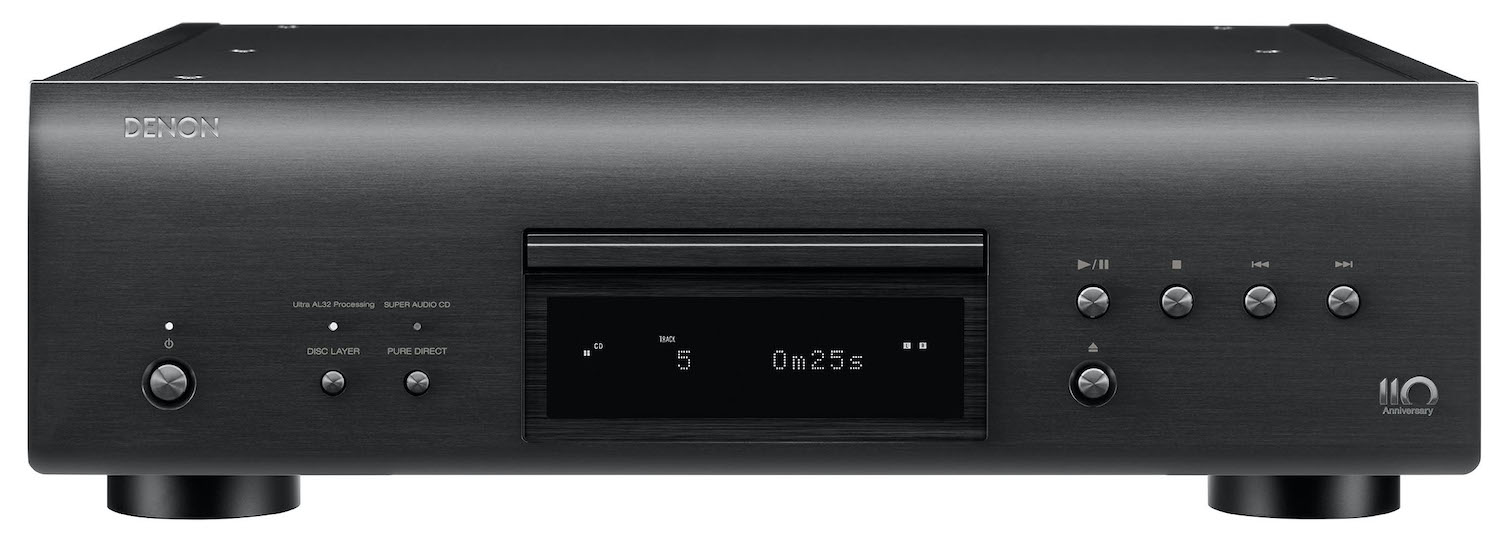
In any case, the sound quality is fantastic with the DCD-A110. The high-quality DAC is sublime and gets the most out of your collection. It also makes little difference whether I connect the player digitally with the PMA-A110 or analog. After all, it contains the same DAC. Let me put it this way, I don’t hear any difference.
The operation works smoothly, skipping of tracks goes smoothly, the CD tray feels very solid and there are no vibrations in the chassis. In any case not perceptible or audible. Also text reproduction of my sacd from The Dark Side of the Moon works flawlessly and during playback you can easily switch between the different layers on the disc. For example, with the push of a button you can switch from the standard stereo layer to the multichannel layer, which is downmixed to stereo and with another push of a button you can play the regular 44.1 kHz / 16-bit CD layer. In this way I can easily compare between the layers and it is noticeable that the reproduction of the high-resolution sacd layer has greater dynamics and seems to contain more transient information. It sounds a bit smoother, a bit more natural or more real and almost a bit fresher.
Quad DAC performance
I have also addressed the DAC in the PMA-A110 in other ways. My Windows laptop connected directly via the USB-B port, the OPPO connected coaxially, Chromecast Audio via the optical input and so tried the DCD-A110 coaxial and optical. Time and time again there was that smooth and refined rendering. The Ultra AL32 Processing provides a significant increase in resolution. Interpolating the sound waves makes almost everything sound hires, just to name one term.
Of course, the DAC cannot conjure up information that is no longer there through compression, but interpolating and thus actually making the waveforms more rounded provides an increase in that quietness in the sound. You will even notice this when playing SACDs. I could compare that well by connecting the OPPO analog and putting the amplifier in analog mode and connecting the DCD-A110 digitally. The sound bites less, as it were. The Signatures from Bowers & Wilkins provide that insight into what that processing can bring. It reduces listening fatigue and allows you to listen longer without the need to turn the volume knob to the left.
Conclusion
It’s Denon’s birthday and who’s birthday is a treat. Denon does that with beautiful anniversary models. The PMA-A110 offers incredible value for your hard-earned money. The dynamic duo is certainly not cheap, but for your investment you get a very refined and versatile integrated amplifier and extremely stable SACD player. And if you hardly listen to your discs, then the amplifier is in any case very worthwhile to give it a listen when it is at the dealers.
The build quality is excellent, the color specially introduced for this A110 series is very beautiful, the digital-to-analog conversion is, in both devices, of a very high level, the operation is wonderfully simple and the amplifier can be used in both home cinema and stereo. setup in place. Add to that the fact that you can use both MM and MC cartridges and that you have a USB-B port at your disposal and the PMA-A110 is a very good sounding amplifier that also offers many possibilities that you cannot easily find for this money. finds a single device. The DCD-A110 is a very good player, but on the pricey side to only play your optical media. In any case, it was genuinely a party to be able to review this combination. Heartily recommended.
PLUS POINTS of DENON PMA-A110 AND DCD-A110
- Rest in the view
- Good DAC
- Beautifully finished
- Can be used with MM and MC cartridges
- USB-B input
- A lot of amplifier for your money (PMA-A110
MINUSES of DENON PMA-A110 AND DCD-A110
- No bi-wiring possible
- No backlight on remote
- Pricey for SACD player only (DCD-A110)
